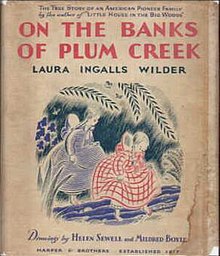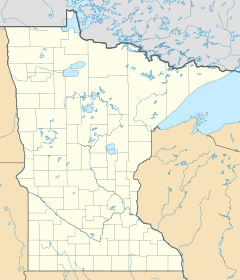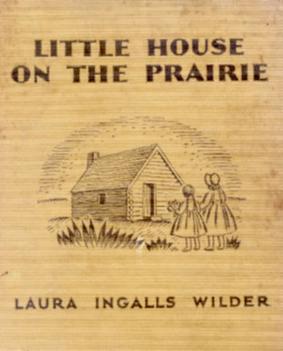
The Little House on the Prairie books comprise a series of American children's novels written by Laura Ingalls Wilder. The stories are based on her childhood and adolescence in the American Midwest between 1870 and 1894. Eight of the novels were completed by Wilder, and published by Harper & Brothers in the 1930s and 1940s, during her lifetime. The name "Little House" appears in the first and third novels in the series, while the third is identically titled Little House on the Prairie. The second novel, meanwhile, was about her husband's childhood.

Laura Elizabeth Ingalls Wilder was an American writer. The Little House on the Prairie series of children's books, published between 1932 and 1943, were based on her childhood in a settler and pioneer family.

Caroline Lake Ingalls (; née Quiner (later Holbrook); December 12, 1839 – April 20, 1924) was an American schoolteacher who was the mother of Laura Ingalls Wilder, author of the Little House books. She is depicted as the character "Ma" in the books and the television series.
De Smet Cemetery is a cemetery located southwest of the town of De Smet in Kingsbury County, South Dakota, United States. Numerous family members from the Laura Ingalls Wilder Little House books are buried there.
Nellie Oleson is a fictional character in the Little House series of autobiographical children's novels written by Laura Ingalls Wilder. She was portrayed by Alison Arngrim in the NBC television show Little House on the Prairie, where her role is much expanded. Three different girls from Laura Ingalls Wilder's childhood — Nellie Owens, Genevieve Masters and Stella Gilbert — were the basis for the fictional Nellie Oleson.

The Long Winter is an autobiographical children's novel written by Laura Ingalls Wilder and published in 1940, the sixth of nine books in her Little House series. It is set in southeastern Dakota Territory during the severe winter of 1880–1881, when she turned 14 years old.
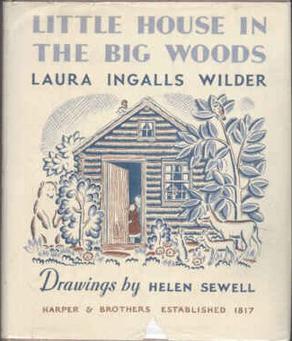
Little House in the Big Woods is an autobiographical children's novel written by Laura Ingalls Wilder and published by Harper in 1932. It was Wilder's first book published and it inaugurated her Little House series. It is based on memories of her early childhood in the Big Woods near Pepin, Wisconsin, in the early 1870s.

By the Shores of Silver Lake is an autobiographical children's novel written by Laura Ingalls Wilder and published in 1939, the fifth of nine books in her Little House series. It spans just over one year, beginning when she is 12 years old and her family moves from Plum Creek, Minnesota to what will become De Smet, South Dakota.
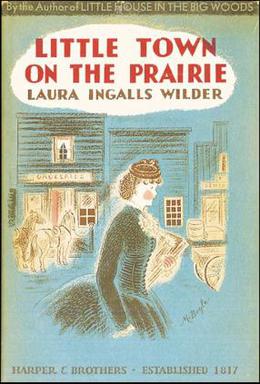
Little Town on the Prairie is an autobiographical children's novel written by Laura Ingalls Wilder and published in 1941, the seventh of nine books in her Little House series. It is set in De Smet, South Dakota. It opens in the spring after the Long Winter and ends as Laura becomes a school teacher so she can help her sister, Mary, stay at a school for the blind in Vinton, Iowa. It tells the story of 15-year-old Laura's first paid job outside of home and her last term of schooling. At the end of the novel, she receives a teacher's certificate and is employed to teach at the Brewster settlement, 12 miles (19 km) away.
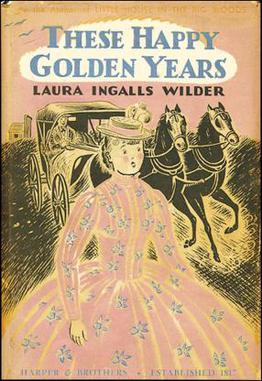
These Happy Golden Years is an autobiographical children's novel written by Laura Ingalls Wilder and published in 1943, the eighth of nine books in her Little House series – although it originally ended it. It is based on her later adolescence near De Smet, South Dakota, featuring her short time as a teacher, beginning at age 15, and her courtship with Almanzo Wilder. It spans the time period from 1882 to 1885, when they marry.

Farmer Boy is a children's historical novel written by Laura Ingalls Wilder and published in 1933. It was the second-published one in the Little House series but it is not related to the first, which that of the third directly continues. Thus the later Little House on the Prairie is sometimes called the second one in the series, or the second volume of "the Laura Years".
Helen Sewell was an American illustrator and writer of children's books. She won a Caldecott Medal Honor as illustrator of The Thanksgiving Story by Alice Dalgliesh and she illustrated several novels that were runners-up for the Newbery Medal.

Old Town in the Green Groves, by Cynthia Rylant, is a novel based on some notes left by Laura Ingalls Wilder and a general knowledge about her life and the times. This book is not officially part of the Little House series, but describes a period between the end of On the Banks Of Plum Creek and the early part of By The Shores Of Silver Lake. In the Little House books, which are not strictly autobiographical and include alterations to the actual chronology of events, this period in Wilder's life is abridged and condensed.

Little House on the Prairie is an autobiographical children's novel by Laura Ingalls Wilder, published in 1935. It was the third novel published in the Little House series, continuing the story of the first, Little House in the Big Woods (1932), but not related to the second. Thus, it is sometimes called the second one in the series, or the second volume of "the Laura Years".

Free Land is a novel by Rose Wilder Lane that features American homesteading during the 1880s in what is now South Dakota. It was published in The Saturday Evening Post as a serial during March and April 1938 and then published as a book by Longmans.
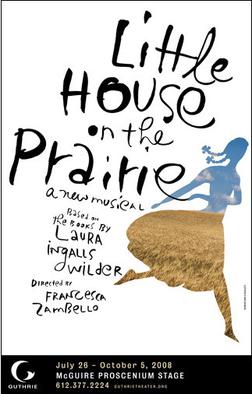
Little House on the Prairie is a book musical adapted from the children's books, Little House on the Prairie, by Laura Ingalls Wilder.
Mr. Edwards is a character that appeared in the Little House series of autobiographical children's novels written by Laura Ingalls Wilder. His character was later adapted for the NBC television show, Little House on the Prairie and given the name "Isaiah Edwards."

Edwin Hyde "Robert" Alden was an American Congregational minister. He was one of the many real people upon whom Laura Ingalls Wilder based a character in the Little House on the Prairie series of books and the NBC television series of the same name.

Little House on the Prairie: The Legacy of Laura Ingalls Wilder is a documentary film about the life of American author Laura Ingalls Wilder. She is best known for her Little House on the Prairie book series.
